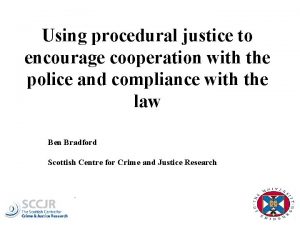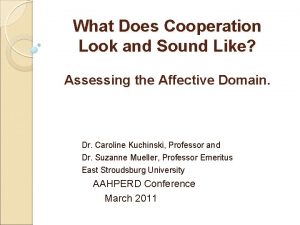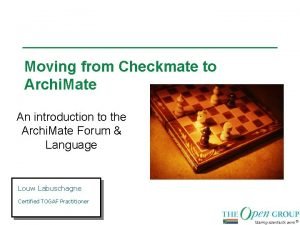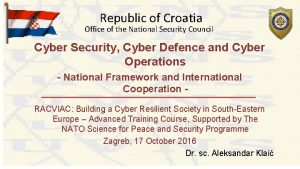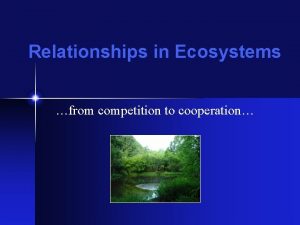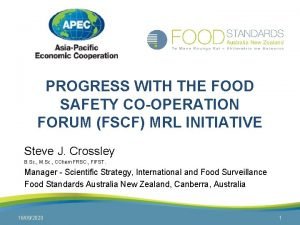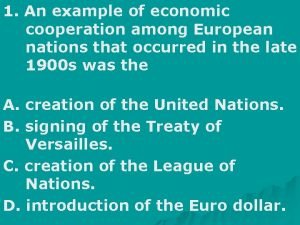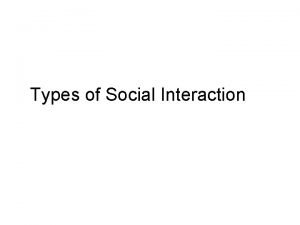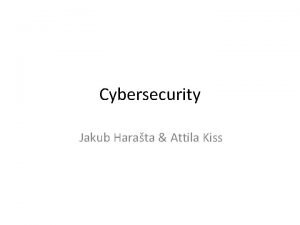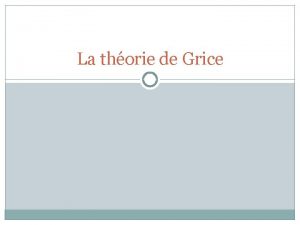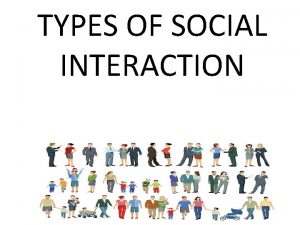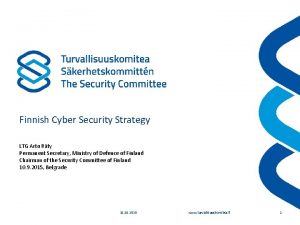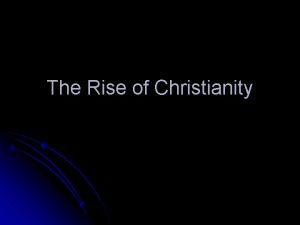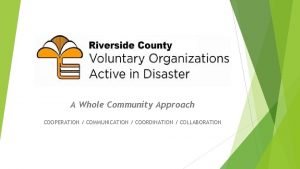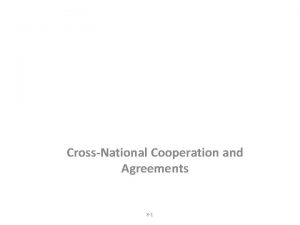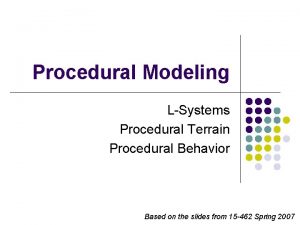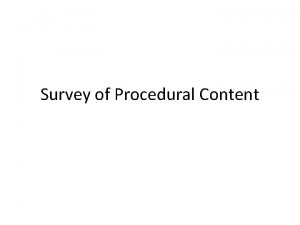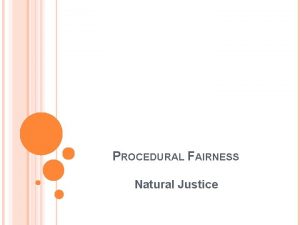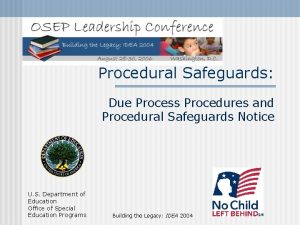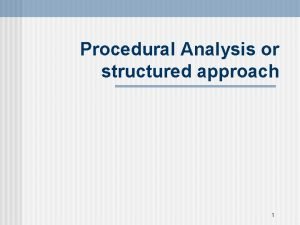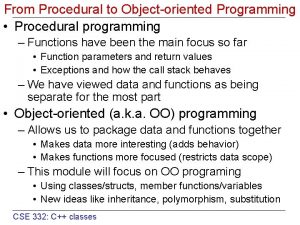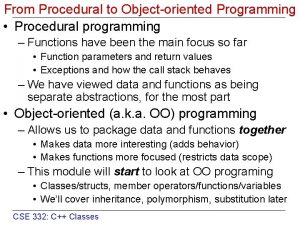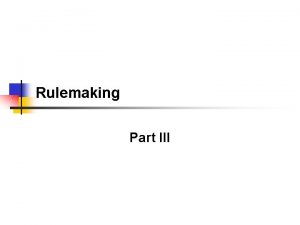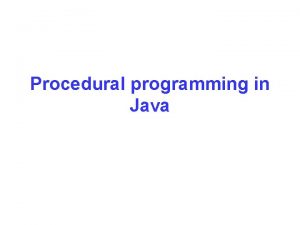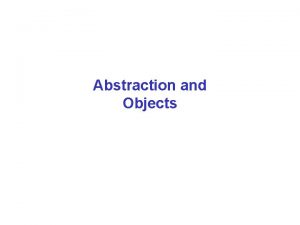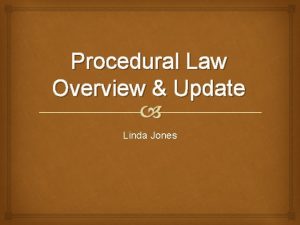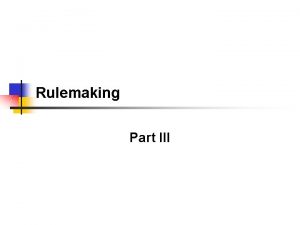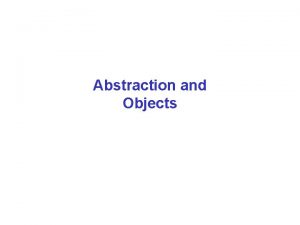Using procedural justice to encourage cooperation with the































- Slides: 31

Using procedural justice to encourage cooperation with the police and compliance with the law Ben Bradford Scottish Centre for Crime and Justice Research

Acknowledgements § This presentation is based on a programme of collaborative work. § A number of different people are involved, but three deserve particular mention: § Jon Jackson (LSE) § Betsy Stanko (MPS) § Mike Hough (ICPR) § All the errors are of course mine!

Outline § A bit of background. § Public opinion and the police - ‘trust and confidence’ § The idea of procedural justice § Why do people cooperate with the police? § Is the legitimacy of the police linked to compliance with the law? § Closing thoughts

‘Trust and confidence’ § ‘Trust and confidence’ seems to be the term generally used to summarise public support for police in the UK. § And we’re talking here about the general public, not ‘offending’ populations. § Classically, this has been measured by asking people ‘Taking everything into account, how good a job do you think the police in this area are doing? ” § Opinions of the police are usually depicted as having been in long term decline.

‘Trust and confidence’ § Police and government policies aim at halting or reversing this decline: § Reassurance policing. § Neighbourhood policing. § ‘Confidence agenda’. § Increasing public confidence is desirable in and of itself. § But another idea is that enhancing trust and confidence will have other positive outcomes, such as increasing cooperation and encouraging compliance. § It is the legitimacy of the police that is most at stake. § And there is some confusion about the meaning of all these terms.

What do we mean by trust? § Barber: trust involves expectations that: § The world will continue more or less as it is - and the behaviour of those we trust will serve to reproduce ‘the way things are’. § The people we trust will be technically competent in the roles assigned to them. § The people we trust will place our interests over their own (in certain circumstances at least). § Or Hardin: § ‘To say we trust you means we believe you have the right intentions toward us and that you are competent to do what we trust you to do. ’ (Hardin, 2006: 17)

Legitimacy § “…a property of an authority or institution that leads people to feel that it is entitled to be deferred to and obeyed. ” (Sunshine and Tyler 2003: 514) § Political legitimacy grants the right to: “enforce commands which cannot be countermanded, and to have a monopoly of such legitimate enforcement”. (Barker 1990: 23) § Beetham (1991): Legitimacy is always granted on the basis of common shared values. Three dimensions must be fulfilled for a power to be considered legitimate: its conformity to a set of rules; the justifiability of these rules in terms of shared beliefs; and the expressed consent of those governed or otherwise affected by the power.

Linking trust and legitimacy § So if enhancing trust and confidence in the police is meant to lead to desirable ends in terms of legitimacy - in terms of cooperation, deference and compliance - what is the mechanism for this? § What generates trust, why should it be linked to legitimacy, and why does legitimacy lead to compliance? § The procedural justice model developed in the United States by Tom Tyler and colleagues provides a robust and empirically testable model for these processes.

Procedural justice § In their dealings with legal authorities people value just and decent treatment, and transparent and fair decision making, over instrumental concerns and concrete outcomes. § Fair and decent treatment promotes feelings of procedural justice and promotes motive-based trust. These in turn increase the legitimacy of the authority concerned § Enhanced legitimacy leads to: § Decision acceptance; § Readiness to comply with instructions/orders; § Compliance with the law

Procedural justice § Procedural justice expresses shared group membership. By and through the way in which they treat people, police officers talk to them about their inclusion and position within society. § This idea links the model to sociological accounts of the position of the police in British Society. § The police are ‘proto-typical group representatives’, powerfully symbolizing community, the law, nation and/or state. § If procedural justice ‘works’ it would suggest cooperation and compliance will be secured by process-based styles of policing, which will encourage people to see cooperating with the police and obeying the law as the right things to do.

A (very) conceptual map Decision acceptance, satisfaction with the decision maker Procedural fairness Legitimacy Cooperation Compliance with the law

Is policing all about procedural fairness? § Just as ‘trust and confidence’ encompasses questions of competence and efficacy, police legitimacy must rest in some part on how effective it is in its core tasks. § Similarly, compliance with the law can’t all be about the legitimacy of legal authorities. Many other factors must be in play: § § The risk of detection and/or sanction Personal morality Opportunity Psychological factors

Cooperation with the police Police effectiveness Legitimacy Police procedural justice Cooperation

Compliance with the law Perceived risk of sanction Police effectiveness Legitimacy Police procedural justice Personal morality Compliance with the law

‘Command control’ policing § Many of these other factors point toward command control styles of policing. § This is the ‘significant other’ of the procedural justice model. § When it comes to public opinion and action, we can’t discount the importance of efficacy and deterrence. § Cooperation with the police will be secured by police demonstrating effectiveness. § Compliance with the law will be secured by the threat of being caught and convicted.

Command control policing § These different (competing? ) models of policing might have very different implications in terms of policing styles - and in terms of cost. § A key claim of Tyler’s work in the US is that ‘command control’ is only minimally effective. It doesn’t secure long-term public commitment to the rule of law - and it’s expensive. § But appealing to (and enhancing) the sense that police and public share similar outlooks and goals might. § CJS institutions that are seen as procedurally fair may secure normative commitment to the rule of law. § Further, fairness, dignity and respect are probably easier and certainly cheaper to ‘do’.

Investigating these issues empirically § We can use social survey data to investigate the links between opinions of the police, legitimacy and cooperation/compliance. § And compare the effect of procedural fairness with ideas about effectiveness and the risk of sanction. § Such surveys (obviously) rely on the answers people give: § They will draw on many different sources when responding - personal experience, what friends and family tell them, what they read in the papers etc. § It probably makes most sense to talk about people’s trust in police fairness. § But people do draw on what personal experience they have. § Treat someone unfairly, and they will remember, and report lower levels of trust in police fairness – their sense that the police are fair will be undermined (and they will also tell their friends and family about the experience).

Measuring trust and legitimacy § We could just ask: “How much do you trust the police to be fair? ”, with answers on a Likert-type scale (a lot; quite a lot; not at all). § But this would create many problems: § It introduces measurement error. § People have different understandings of words such as ‘trust’ and ‘fair’. § Respondents will draw on an underlying attitude or orientation in order to provide an answer - and it is this we are usually more interested in. § A better way is to use some kind of latent variable technique.

Latent Variables § Answers to a series of survey questions are used to build up a picture of an unobserved latent characteristic, orientation or ‘factor’ which influences the answers respondents give to the different questions. § Instead of asking “How much do you trust the police to be fair? ”, we might ask people to say how much they agree/disagree with a range of statements such as: § § “The police treat everyone fairly” “If I had contact with the police they would treat me with respect” “The police in this area are helpful” Etc. § Answers given can be combined and used in a variety of ways to gain insight into the latent variables (or factors) which underlie them, and the relationships between them.

Trust in police fairness Police fairness Do you agree that the police in this area… Loading Factor Would treat you with respect if you had contact with them. 70 Treat everyone fairly regardless of who they are Are helpful . 75 . 79 Are friendly and approachable . 73

Legitimacy and cooperation § Legitimacy can be thought of as residing in public assessments of conformity to relevant rules, the justifiability of these rules in terms of shared moral values, and expressions of consent to the role of the police. § We could operationalize police legitimacy in number of ways. One way is to ask people about the extent to which they feel the police share their own moral values, and the extent to which they will defer to and cooperate with officers: § ‘Moral alignment’ § ‘Duty to obey’ § ‘Propensity to cooperate’ § According to Beetham, ‘moral alignment’ should be the most important component of police legitimacy. § And according to Tyler, opinions about the fairness of the police should be more strongly linked to legitimacy than opinions about police effectiveness.

Legitimacy and cooperation

Cooperation with the police Police legitimacy: moral alignment. 28 . 55 Police procedural justice . 16 -. 12 Propensity to cooperate. 67. 08 Police effectiveness Police legitimacy: duty to obey Source: London Metropolitan Police Public Attitudes Survey 2009/10

Legitimacy and compliance § What about compliance with the law? That police fairness is linked via legitimacy to compliance with the law is perhaps the strongest claim of the procedural justice model - and potentially the most powerful. § We can only approximate these issues with social survey data. § But there is relatively good evidence that asking respondents to report on occasions that they have broken the law provides useful information § This allows us to plot relationships, even if we might not believe the rates of offending reported. § If Tyler’s model holds in the UK, we should find a stronger link between perceptions of the legitimacy of the police and self-reported offending than between perceived risk of sanction and offending.

Legitimacy and compliance Measuring compliance with the law…. . § During the past 12 months, how often have you done each of these things? § § Illegally disposed of rubbish or litter ('fly tipping'). Committed traffic offences. Vandalised public property. Took something from a shop without paying for it.

Legitimacy and compliance Measuring perceived risk of sanction…. § How likely do you think it is that you would be caught and punished by being fined and/or arrested if you… § § Illegally disposed of rubbish or litter ('fly tipping'). Committed traffic offences. Vandalised public property. Took something from a shop without paying for it. … and personal (legal morality) § How wrong do you think it is to do each of the following things: § The same four offences.

Legitimacy and compliance Perceived risk of sanction. 29 Police effectiveness -. 01. 11 Legitimacy -. 25 . 78 Police procedural justice Source: NPIA 2009 -. 16 Personal morality Self-reported offending

Implications § So far, all the evidence suggests that the procedural justice model ‘works’ in England Wales - and probably Scotland! § By treating people fairly and respectfully, police promote trust, enhance legitimacy and encourage public cooperation and compliance with the law: § Procedural fairness encourages people to believe that they and the police are on the same side. § Of course, treating people unfairly has the opposite effect. § Procedural justice effects are far bigger than any arising from ‘command control’ styles - at least as far as the majority of the public are concerned.

Further questions § What about offenders? § Does procedural justice ‘work’ for those heavily involved in crime - or who are at risk of becoming so? § What about BME and other minority groups, who might not feel ‘shared group membership’ with the police? § Data limitations and the need for further studies. § In particular, most existing UK data is cross-sectional, which means we cannot yet properly untangle causal effects. § I’ve caricatured ‘command control’ - and surely for some people, some of the time, effectiveness and instrumentality are important? How do we account for this? § The complexity of other factors involved in acts of cooperation and compliance.

Some final thoughts § How should we measure police performance in this light of this emerging work? § Is trust and confidence enough (obviously not, any more but should something replace it? ) § I would argue yes, but we should look at outcomes - public cooperation, reporting rates, etc. § These might give us insight into what should probably be the ultimate aim of the CJS - not clearing up crimes that have already occurred but working with other state and civil institutions toward stopping crime occurring in the first place.

Ben Bradford Scottish Centre for Crime and Justice Research University of Edinburgh ben. bradford@ed. ac. uk
 Procedural.justice
Procedural.justice Asia pacific economic forum
Asia pacific economic forum International civil aviation organization jobs
International civil aviation organization jobs Labour management cooperation
Labour management cooperation What does cooperation look like
What does cooperation look like Collaboration or cooperation
Collaboration or cooperation Archi visio
Archi visio Erasmus mundus external cooperation window
Erasmus mundus external cooperation window Nis cooperation group
Nis cooperation group Cooperation relationship ecosystem
Cooperation relationship ecosystem Apec food safety cooperation forum
Apec food safety cooperation forum Advantage of cooperation
Advantage of cooperation What is one way that cooperation helps lions to survive
What is one way that cooperation helps lions to survive Working group on international cooperation
Working group on international cooperation Economic cooperation examples
Economic cooperation examples Conflict interaction examples
Conflict interaction examples Communication coordination cooperation during the emergency
Communication coordination cooperation during the emergency Ddo duping
Ddo duping Les 4 maximes de grice
Les 4 maximes de grice Cooperation offer
Cooperation offer Mutual cooperation agreement template
Mutual cooperation agreement template International laboratory accreditation cooperation
International laboratory accreditation cooperation Cooperation in social interaction
Cooperation in social interaction Arto räty
Arto räty Christianity
Christianity International laboratory accreditation cooperation
International laboratory accreditation cooperation Communication cooperation coordination collaboration
Communication cooperation coordination collaboration Blueprint for sectoral cooperation on skills
Blueprint for sectoral cooperation on skills Oecd gps
Oecd gps Interamerican accreditation cooperation
Interamerican accreditation cooperation Cross national cooperation
Cross national cooperation Gmp pics
Gmp pics
